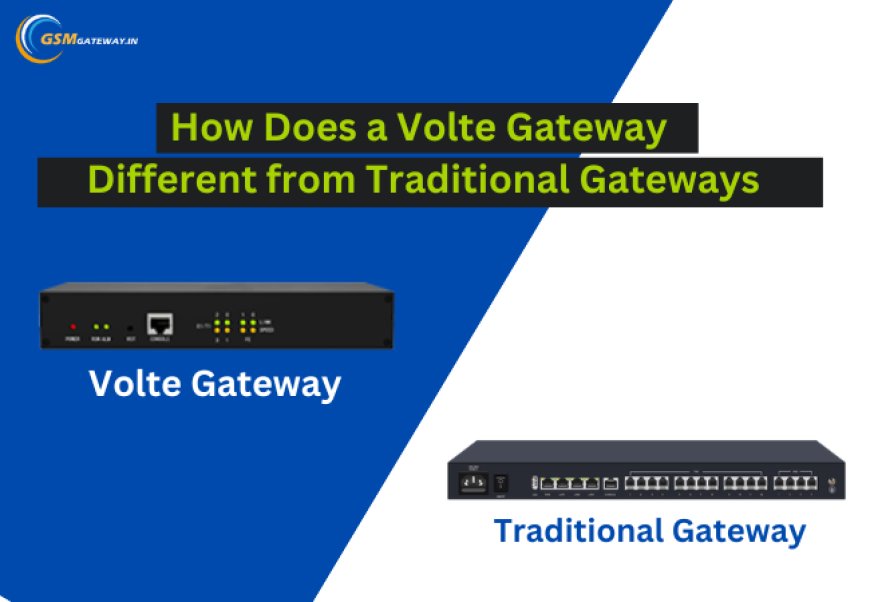How Does a VoLTE Gateway Different from Traditional Gateways?
VoLTE Gateway: Operates on advanced 4G LTE networks, providing compatibility with modern devices and faster connections. Traditional Gateway: Relies on older technologies like PSTN, 2G, and 3G, which may be phased out in many regions.


The technology selection has a significant impact on call quality, connection, and operational efficiency in the always-changing telecom industry. VoLTE (Voice over LTE) gateways and normal gateways are two well-known choices among the many solutions that are available. What are the differences between them, though, and which one best fits the demands of today’s business? To help you in making an informed choice, we examine the main differences between these technologies in this post.
What Is a VoLTE Gateway?
A VoLTE Gateway enables high-definition voice calls over 4G LTE networks. VoLTE uses the data channel of LTE to transmit voice calls, unlike traditional services that depend on older technologies like 2G and 3G. This method enables smooth integration with modern IP-based communication systems, quicker connections, and superior call quality.
Companies like call centers, telecom providers, and businesses that need effective communication methods often use VoLTE gateways.

What Are Traditional Gateways?
Traditional gateways are tools or systems that convert communication signals from one type to another. These gateways frequently connect different networks, such as PSTN to VoIP or analog to digital. Many systems still rely on outdated technologies like 2G, 3G, or PSTN (Public Switched Telephone Network), but legacy systems continue to use them extensively.
Differences Between VoLTE Gateways and Traditional Gateways
Technology and Network Compatibility
VoLTE Gateway: Operates on advanced 4G LTE networks, providing compatibility with modern devices and faster connections.
Traditional Gateway: Relies on older technologies like PSTN, 2G, and 3G, which may be phased out in many regions.
Data Usage
VoLTE Gateway: Utilizes LTE data channels for both voice and data, ensuring better bandwidth utilization.
Traditional Gateway: Typically separates voice and data, leading to less efficient use of available resources.
Application and Integration
VoLTE Gateway: Seamlessly integrates with IP PBX Systems, cloud solutions, and VoIP services, making it ideal for businesses adopting modern communication strategies.
Traditional Gateway: Primarily supports legacy systems, offering limited integration with advanced communication tools.

Which Gateway Should You Choose?
The choice between a VoLTE Gateway and a traditional gateway depends on your business requirements and infrastructure:
If your company values modern integrations, scalability, and high-quality audio communication, use a VoLTE Gateway.
If your current infrastructure is largely dependent on legacy systems and updating is not practical in the near future, stick with a traditional gateway.

Conclusion
VoLTE and other modern technologies are setting the standard for improved communication in the quickly evolving telecom sector. VoLTE gateways, which provide unmatched call quality, scalability, and integration capabilities, create the future of legacy networks, where old gateways worked as their backbone.
Businesses can position themselves to meet the demands of modern communication and maintain their advantage in an increasing digital environment by investing in a VoLTE Gateway.
Related Blog: Which is Better VoLTE or GSM?
What's Your Reaction?
























